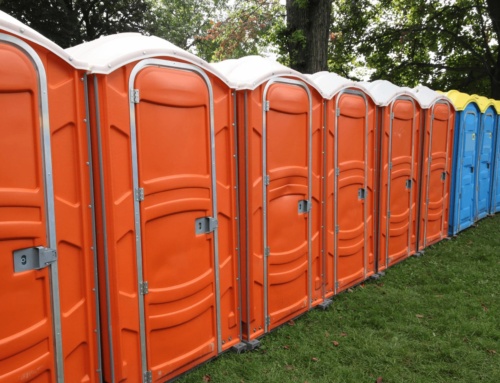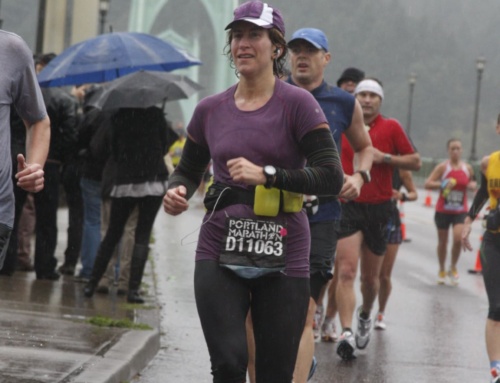
Photo Credit: Allison Pattillo
Trail Running 101: the next edition of Another Mother Runner Gears Up. A little twist on this column: Allisson Patillo, our Gears Up Editor, gives us the 411 on trail running and all of the tips she’s picked up along the way. Later this week, she’ll share her favorite trail gear.
Running is running, right? Yes, but…. it also depends upon the surface. With road running, you contend with cars, curbs, and crowned roads (the worst). If you stick to sidewalks or gravel paths, avoiding people can be the challenge.
With trail running, you navigate roots and rocks, uphill and downhill terrain, as well as mud, different surfaces and trail obstacles. Running is wonderfully simple at its core, yet there are times and conditions that require a more technique-driven approach.
We went on a trail run with dad and professional runner Max King and other members of his Salomon team while in Manitou Springs for the Pikes Peak Ascent to get useful tips for taking your running off-road.

Photo Credit: Allison Pattillo
GOING UP
Guess what? Even the pros taking hiking breaks!
Road or trail, going uphill is hard. And when it’s really steep or a long climb, hiking or power walking may be faster than running. That doesn’t mean take it easy–you’ll still be pumping your arms and firing your glutes as your main muscle driver. When the trail turns up, King says it’s important to slow down and shorten your stride, while finding a pace you can maintain.
If you’re heading up a steep climb with the added challenge of higher elevation, that may mean more hiking than running to accommodate the thinner air. As the terrain gets steeper, make sure your toes, knees, and nose are in alignment with feet landing under you, not in front of you, and that you keep your chest open to get more air. A more compact stride and upright body position help with both nimbleness and efficiency as you head uphill, no matter if you’re running or power hiking.
DOWNHILL DREAMING
The secret to running downhill is to relax and have fun! Sometimes that’s easier said than done.
If you’re tentative and land on your heels (my tendency) your feet may slip out in front of you, especially on loose terrain. Instead “accept the downhill.” This means be dynamic on your feet like a boxer with quick, light steps. Think about landing on your forefoot for more of spring-like (Tigger-esque) responsiveness. You aren’t absorbing the ground under your foot, so much as you are rebounding off of it.
Your feet will follow your eyes, so plan to watch three to five steps ahead of where you are instead of at the ground directly in front of you. Remember, just like in cycling and skiing, look where you want to go, NOT where you don’t want to go! Another trick is to use your arms, not necessarily to grab things, but instead spread them out, and use your wingspan to provide balance and enhanced body awareness.
TERRAIN AND CONDITIONS
Whether you are heading up, down, or simply cruising along, it’s important to work with the terrain. For example, if there’s a log or rock in the trail, it takes less energy to glide over it than it does to step up and step down on the other side. Also, running surfaces are always changing, so pay attention. Rocks can be a solid place to step, at least when they are dry. If it’s been raining or snowing, you may look to dirt or mud for foot placement. On loose gravel, take a couple of light steps until you find a solid foundation. This is a great time to let your inner kid play with the elements along the trail, almost like parkour, to help you turn, slow down, or simply have more fun.
MAKE IT A FAMILY AFFAIR
In addition to being a dad, King leads youth trail running camps to introduce kids to the sport. “Trail running is a whole different world than cross country and track,” says King. “I want to get kids outside and open their eyes to what else they can do with running.” As for his own children who are younger, King says it’s all about having them enjoy being out in nature. Start by taking your kids to hike your runs, then let them pick up the pace for short distances, if they are so inclined.

Photo Credit: Allison Pattillo
DO IT FOR YOU
While your road or track miles may be judged by the time on your watch, trail miles give you the opportunity to let that go. Use trail miles as an opportunity to leave your watch at home.
Instead, simply go out and enjoy the adventure of it (after letting someone know where you are going, of course). Sure, it may take a little longer, and that’s okay because being out in nature is also incredibly relaxing and restorative (talk about a good reason to go!). If you feel bad asking your partner to watch the kids, use new parents (and arguably the best trail and mountain runners around, Emelie Forsberg and Kilian Jornet) as your guides. Not only do they carefully plan training schedules in advance to make sure both parents get the training time they need, they often take their daughter to watch while the other parent is competing.






One does not simply run up the Barr Trail :) that is one tough climb but so rewarding
I need tips for coming back to trail running. I broke my arm in a trail race about 6 months ago, and I have shied away from it ever since. I need to get back into it, but I admit that fear is a hard thing to overcome.
I ran up Pikes Peak (and down)- only walked the last part….marathon time…6:06. Also ran across the Grand Canyon with only a fanny pack with a water bottle and some candy and a windbreaker for the climb out. (12:36) People over think these runs when you can do them carrying minimal items paired with maximal training.